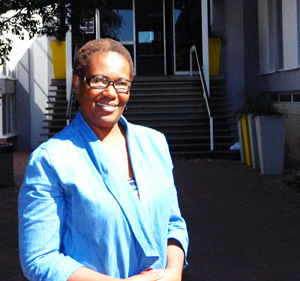 Emily Matabane |
September is International Deaf Awareness Month and Emily Matabane – a lecturer at our Department of Sign Language – let us into the world of the deaf. A world she herself lives in.
Through the aid of Tshisikhawe Dzivhani, an interpreter, Matabane shared her experiences with us in a question and answer (Q & A) session.
Q: Tell us about your career as a lecturer in Sign Language.
A: I started working at the university as a Sign Language lecturer in 2000. I have a lot of deaf and hard of hearing people in my family and I also went to a deaf school. My mother is hard hearing and after graduation I taught her sign language. This made me want to teach other people sign language, who in turn will teach more people as well.
Q: What are common misconceptions about the deaf community?
A: Hearing people will often think you are stupid if you are deaf. But in fact we can still understand people – for instance, if they write down what they want to say when we don’t have an interpreter with us.
People also thought I couldn’t drive or buy a car because I am deaf – while I actually had a valid driver’s license. When I wanted to get a loan at the bank to buy my car, they wanted a doctor’s letter to prove that I’m allowed to drive, even though I have a license. Eventually, I did get the loan and I did buy the car!
Q: How can hearing people support the deaf community?
A: People can learn sign language. That is what I wanted to achieve when coming to university as a Sign Language lecturer. Hearing students who will become psychologists, teachers and social workers will be able to work with deaf people and perhaps teach others sign language too. Deaf people simply need more people to socialise with them.